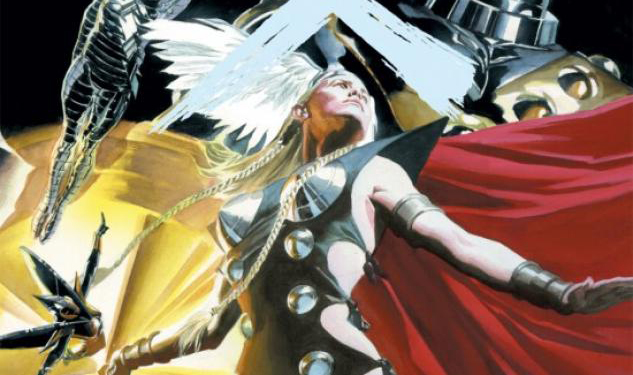The recent fuss about the new female Thor, combined with the fact that Disney owns Marvel Entertainment, has sparked jokes about whether this makes Thor a Disney Princess. Disney says the Marvel movieverse is separate from their Princess line, but it’s still a remarkably telling question if we take it seriously and actually look at what qualities make a Disney Princess, which Thor has, and what this shows about the Disney-patented princess obsession which has such an enormous impact on millions of kids (especially girls) and on our culture as a whole.
Before anyone protests that the new female Thor isn’t actually Odin’s son, but a different person carrying Mjollnir, we can look instead at Thor from Marvel’s Earth X, when the thunder god actually was transformed into a woman (Marvel has no shortages of any given character being turned into any given thing).
Insane as it feels to say it, it takes more than being a princess from a franchise made by Disney to make a character a “Disney Princess.” Disney’s Princess line is circumscribed and exclusive. After a new princess is created and a film comes out, a different chunk of the expanding marketing hydra that is Disney decides whether she should be added to the official list. After that she gets added to the official Princess merchandising, including dolls, costumes, bags, clothes, school supplies, jump ropes, books, tea sets, microphones and a constant cycle of low-end and high-end collectables (Have $1,400 to get rid of? You can solve that problem with one crystal-studded figurine of Ariel!)

And ever since Rapunzel, a new princess also gets a snazzy coronation at one of the Disney parks, and a new outfit for the occasion, a pattern which sparked widespread outcry when tomboyish Merida from Brave was scheduled to be crowned the 11th Disney Princess and the merchandisers designed a more feminine outfit, sans her trusty bow and arrow. (In the end she kept the bow, and you can buy the Merida Archery Set for $19.95). The princesses from Frozen are currently in the waiting period, and excitement about a hypothetical coronation is already stirring.
There is no public official list of the qualifications needed to become a Disney Princess, but there are clear patterns of who gets into the club, and we can apply them to the Thunderer.
First, traits that help:
-
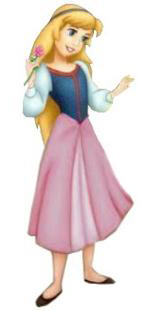 It helps if your movie was a moneymaking hit. Princess Elionwy from The Black Cauldron (1985, pictured at the right—sure looks like a Disney Princess doesn’t she?), and Princess Kida from Atlantis: The Lost Empire (2001) have never made the cut. It’s pretty easy to see why, since neither film was a great box office success or had much staying power in cultural memory.
It helps if your movie was a moneymaking hit. Princess Elionwy from The Black Cauldron (1985, pictured at the right—sure looks like a Disney Princess doesn’t she?), and Princess Kida from Atlantis: The Lost Empire (2001) have never made the cut. It’s pretty easy to see why, since neither film was a great box office success or had much staying power in cultural memory.
Does Thor qualify? Totally, with Dark World alone grossing 208 million, beating Tangled, The Princess and the Frog, and even the inflation-adjusted total for The Little Mermaid.
-
It helps to be the child of a king, or to marry a prince. This may seem obvious, but even the staggeringly popular Tinkerbell and Alice from Alice in Wonderland didn’t make the cut.
Does Thor qualify? Technically, as the
sondaughter of a king, particularly if we accept Marvel’s genaology and don’t worry too much about what original Norse Mythology has to say.
-
It helps to be a woman of color. It feels good placing this so high on the list, but whether Disney is being actively progressive or just grudgingly responding to public outcry, the Disney Princess lineup has speadily gained in ethnic diversity. Mulan made the list despite not being a princess in the related-to-royalty sense at all, and even though Mulan made less than Tarzan, no one has considered adding Jane Porter to the list, despite her surprising fan base. Pocahontas and Jasmine are in too. Many of us do not think of The Princess and the Frog as one of Disney’s more notable hits, but at a production of Disney on Ice I saw in Brooklyn, Tiana got the biggest cheer of the night from an audience packed with delighted little African American girls welcoming what several described to me as “their” princess. This diversity is certainly part of Disney trying to offer less terrible role models, and since Tiana offers self-motivation and entrepenurial determination instead of cleaning house and being in a coma, she certainly marks a broad improvement over Snow White, Cinderella and Sleeping Beauty.
Does Thor qualify? No, our thunderous blonde belle is about as white as it gets, but if it were the mythological Thor instead of Marvel’s
heshe could at least join Brave’s Merida in attempting to represent a specific, real cultural background instead of the generic nationless European blur inhabited by Rapunzel and company. Then Princess Thor could visit Frozen’s Elsa and Anna at Epcot’s Norway Pavillion, or maybe do something for Iceland.
- It helps to be from a classic fairytale or folklore, rather than an original story or more recent literary work. The bedtime classics—Sleeping Beauty’s Aurora, Beauty and the Beast’s Belle, Tangled’s Rapunzel—are all in, leaving on the outskirts Alice, Kida, Jane Porter, Megara from Hercules, and even Esmeralda from The Hunchback of Notre Dame, though her film grossed more than The Princess and the Frog and she would contribute to the racial diversity of the Princess lineup.
-
It helps to be the right age, i.e. budding teen. The Princess marketing is very much a coming-of-age fantasy, about being a princess when you grow up, and imagining the first steps of growing up with a heroine young enough that tiny girls can still imagine being 14 or 16 when 25 seems incomprehensibly far away. A lot of the princess stories have traditionally been about true love, but as Frozen and Brave have taken the excellent step of saying there are other things valuable enough to be the prize at the end, like friendship, familial love or self-discovery. Princesses also can’t be too young, because then they are an alter-ego rather than a future-ego, as in Princess Sofia from Disney’s kid series Sofia the First is engineered for the alter-ego niche, a little girl whose mom marries the king so she suddenly becomes a princess and gets to hang with Aurora and fairy godmothers, but she very officially does NOT get to be an official Disney Princess.
Does Thor qualify? Here we can give an interesting “No.” While there are certainly coming-of-age and power fantasy aspects to Marvel comics, Thor is a much more mature figure than our Disney Princesses, both facing more grown-up problems and more adult kinds of relationships, at least in terms of the kinds of relationship impediments the movies throw at himher: Long-distance relationship tension? Even Ariel never had to put up with that. Administering and defending kingdom? Wait, prince(sse)s have to do things continually, after the happy ending?
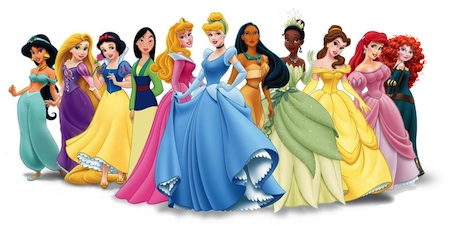
So far we can see Princess Thor half-fitting but half-not-fitting into the pretty pink palace where Disney Princesses live out their post-victory happy ever afters. Those are the deal makers, but how about deal breakers?
-
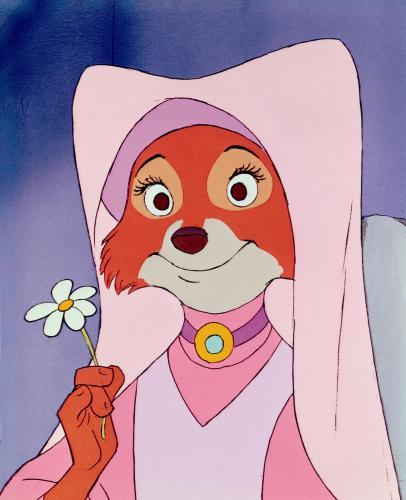 You have to be human or humanoid. The clearest pattern is that, no matter how princessy you are, being a Disney Princess means having a humanoid body capable of wearing dresses and frolicking under pink gazebos. Maid Marian from Robin Hood and from The Lion King have never made the line, despite Nala’s blockbuster status and unimpeachable royalty (Simba’s mate, plus have you noticed any other daddy lions around? I haven’t). Merchandising homogony is a big part of this: the princesses have to have matching ball gowns, matching dolls, and look at least vaguely compatible when drawn in a group, though diverging art styles, especially in the CG age, have made this increasingly tricky. And at Disney on Ice and other events they need to all dance in a line with their princes. (The “Who will Merida dance with?” puzzle has been potentially solved by Frozen, if Disney has the guts to let her dance with Elsa.)
You have to be human or humanoid. The clearest pattern is that, no matter how princessy you are, being a Disney Princess means having a humanoid body capable of wearing dresses and frolicking under pink gazebos. Maid Marian from Robin Hood and from The Lion King have never made the line, despite Nala’s blockbuster status and unimpeachable royalty (Simba’s mate, plus have you noticed any other daddy lions around? I haven’t). Merchandising homogony is a big part of this: the princesses have to have matching ball gowns, matching dolls, and look at least vaguely compatible when drawn in a group, though diverging art styles, especially in the CG age, have made this increasingly tricky. And at Disney on Ice and other events they need to all dance in a line with their princes. (The “Who will Merida dance with?” puzzle has been potentially solved by Frozen, if Disney has the guts to let her dance with Elsa.)
Does Thor qualify? Yes, Thor is safely humanoid, except when he happens to be a frog.
-
You can’t be live action. This seems to be a 100% deal breaker. There are no coronations waiting for Giselle from Enchanted, or Mary Poppins (kickass as the multidimentaional powers of her ballgown would be). Why? Partly again that they have to look reasonably homogenous, but royalties, is probably the real answer. Disney owns its animated character designs, but live action actresses would have to be paid for the use of their faces and bodies, and that means split profits, and potential contract battles if someone is crowned and then makes increased demands.
Does Thor qualify? No, our Thunderess has hit a deal-breaker here, which would probably block a movie version at least from the Disney Princess lineup, even if the executives were otherwise all for it.
The simplest moral of this story is that cash rules all, and Disney’s Princess line is a multi-multi-million-dollar industry, so any newcomers will be very carefully vetted by experts with tedious spreadsheets. But Princess Thor’s hypothetical qualifications and disqualifications also expose a fair bit about the type of role models Disney is currently engineering. Recent Disney films have tried to respond to criticism. They’ve offered diversity: Jasmine, Pocahontas, Mulan, Tiana. They’ve offered more active and empowered women: Merida, Tiana, Mulan, and even their Rapunzel are active, creative and prepared for confrontation in a way tha would be much healthier to emulate than either Aurora or Snow White. And they’ve begun to self-critique Disney-style “true love” romance in Frozen and Brave.
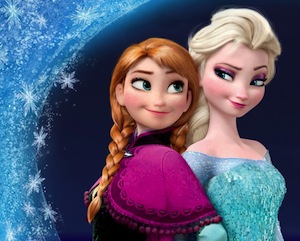 One thing Disney hasn’t done, and clearly does not want to do, is move on from the adolescent moment and the “ever after” model. Disney Princesses conquer their adversaries and adversaties thoroughly. Frozen’s sisters don’t live in a world where a suspicious public will continue to distrust and fear Elsa’s superpowers, and the threat of angry mob or government attack will not haunt them every day of their lives as it does for Marvel’s heroes, even teenaged ones. Brave’s Merida will not be assailed by cursed demon bears every week, nor will the witch return with a hidden second stage of the scheme to conquer the kingdom and then the universe, wa ha ha, wa hahahaha!
One thing Disney hasn’t done, and clearly does not want to do, is move on from the adolescent moment and the “ever after” model. Disney Princesses conquer their adversaries and adversaties thoroughly. Frozen’s sisters don’t live in a world where a suspicious public will continue to distrust and fear Elsa’s superpowers, and the threat of angry mob or government attack will not haunt them every day of their lives as it does for Marvel’s heroes, even teenaged ones. Brave’s Merida will not be assailed by cursed demon bears every week, nor will the witch return with a hidden second stage of the scheme to conquer the kingdom and then the universe, wa ha ha, wa hahahaha!
If the narratives offered by the Disney Princess and the Marvel Superhero are both wish fulfillment power fantasies, Disney’s is about having an adventure and achieving ever after—a fantasy version of growing up and achieving a happy adult life. Marvel’s is much more about having or finding the power to face continuing obstacles, especially if we look back to the roots of the Thor comic when Thor began trapped in the body of a partially disabled medical student, facing the long grind of life in an ablist society. (Marvel’s treatments of disability have certainly been spotty, but they certainly get points over Disney which hasn’t ventured much past Ariel’s enchanted mutism and nearly-effortless learning to walk).
Disney Princesses live in a world of problems vanquished instead of one of burdens borne, as faced by Marvel’s Thor, or indeed the mythological Thor. Many simple things can explain this difference: the one-shot Disney format in contrast with Marvel’s endless series; the tiny kid demographic which is not as interested in daily struggle as teen comics readers who face so many kinds of daily grind. Whether Odin decides to teach Thor humility by making him a “cripple,” exiling him from Asgard, taking away Mjollnir, or by turning him into a woman to experience the discriminatory treatment that invites, all are continuations of the central message that even someone as powerful as Thor has to struggle, grow and learn, just like his readers. In this sense the Marvel hero(ine) is more mature than a Disney Princess, not necessarily in his her writing or his her actions, but in the life experience he she is intended to describe.
Of course, the true authority on the Disney Princess is not Disney at all, but the grassroots power behind the Princess line: the little kids that love it. A friend of mine with a particularly princess-obsessed tiny daughter challenged her one day (during the last Royal Wedding froufrou) to define what a princess is. Her answer: “A princess is someone who is beautiful and gets to do whatever she wants all day.” A perceptive definition, picking up on Disney’s unilateral focus on completed ever afters, and the variously problematic obsession with physical beauty as a success metric for women which these princesses reinforce. But it the moral side of things that grownups are most directly tempted to poke. My friend challenged his daughter: “She gets to do whatever she wants, so what if what the princess wants to do is take away your doll?” pointing at his daughter’s beloved and constantly-clutched plastic companion. The tiny nose wrinkled as she thought hard: “Then she’s not a princess.”

This declaration is more than an adorable demonstration that a six-year-old can derive her own notion of tyranny and illegitimate rule. It also reflects the special moral universe in which Disney Princesses exist, in which young women can overcome adversity and achieve power through taking constructive and moral actions, coming through as consistently good girls, and thus as passable moral role models, even if other aspects of their stories are still very problematic. Much of this comes from the fact that Disney Princesses never face real moral quandaries, since villains continue to obligingly die of their own accord (or in Tangled’s case to be tripped and killed by the animal sidekick, a fascinating moral moment). But if, as its propaganda puts it, Disney is striving with the Princess line to present girls with examples of young women who, whatever their other attributes, are honest, kind, perseverant, loyal and noble, and therefore successful and worthy to be in positions of political power, that specifically isn’t a the worst political lesson for society to set trickling down to its six-year-olds. Princess Thor with her “Seriously, I have to kill my brother again?!” can wait until kids’ ages have two digits.
Disney has a long way to go in terms of providing healthy role models, as does kids’ media in general, as I continue to play the game of going to the toy section of a grocery store to see if there are any ungendered toys, and usually fail. But there has been some improvement, with Mulan, Tiana and Anna, with Lego’s new Female Scientist sets (chemist, paleontologist and astronomer) and Matel’s 2013 Barbie Career of the Year was Mars Explorer Barbie, but given how much the 2012 Career of the Year Presidential Candidate Barbie resembled the depressingly homogenous faces that dominate today’s politics, I think it would be pretty cool if Disney put out a “Vote Princess Tiana 2016” backpack for little kids.
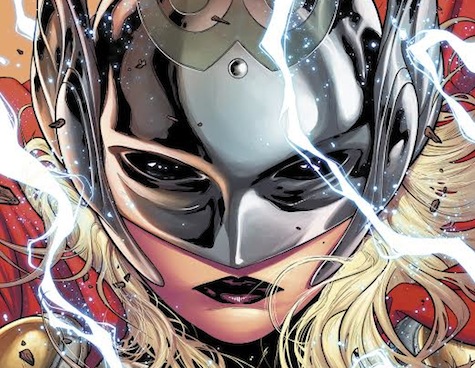
Meanwhile, Thor seems to be safe from Disney Princess Status, thanks to her live action source films and too-mature experience, though her blockbuster success puts her at risk. The trickier question—at least for those made uncomfortable by how a female Thor brings women into an arena of power where formerly male fans saw only themselves—is whether the 2014 Barbie Career of the Year could be Goddess of Thunder? I wouldn’t mind.
(With many thanks to my Disney experts, Mariela Ortiz and Alys Lindholm.)
Ada Palmer is an historian, who studies primarily the Renaissance, Italy, and the history of philosophy, heresy and freethought. She also studies manga, anime and Japanese pop culture, and has consulted for numerous anime/manga publishers. She writes the blog ExUrbe.com, and composes SF & Mythology-themed music for the a cappella group Sassafrass. Her first novel is forthcoming from Tor in 2015.










